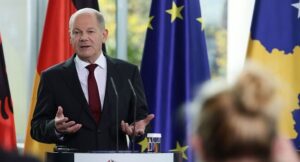German inflation was unchanged in April, official data showed Monday, holding at a three-year low as hopes grow that the European Central Bank will soon start cutting interest rates.
Consumer prices in Europe’s largest economy grew 2.2 percent from a year ago, according to preliminary data from federal statistics agency Destatis.
It was the same rate as in March, and its lowest level since April 2021.
Closely watched core inflation — which excludes volatile energy and food prices — eased to three percent from 3.3 percent in March.
Ulrich Kater, an economist from DekaBank, said the “further easing of the core inflation rate clears the way for the ECB to cut interest rates in June” at its next meeting.
But he cautioned that policymakers must remain vigilant to risks that could push inflation higher, in particular wage growth.

The steady German inflation rate was helped by a fall in energy prices, which were down 1.2 percent on the same month last year.
However energy prices eased less than in March in part because of rising fuel costs.
Energy costs skyrocketed after Russia invaded Ukraine in early 2022 but have been falling in recent months, helping to lower overall inflation.
Food prices edged up 0.5 percent, while the price of services went up by 3.4 percent, driven by pay rises in many sectors, although this was slower than the increase in March.
The German government forecasts inflation at 2.4 percent this year, following a 5.9-percent rate in 2023.
In Spain, inflation accelerated slightly in April to 3.3 percent from a year earlier, driven by gas and food prices, according to preliminary data.
A series of aggressive ECB interest rate hikes since 2022 have helped bring inflation back towards the bank’s target of two-percent across the eurozone.
But with economic growth in the 20-nation single currency area struggling, calls have been growing louder for cuts to begin soon.




